Solo Book Club
Two novels and a play have pulled me deeper into reading this month. But first, we saw lots of pictures of the Beatles
Tom and I went to Portland this month to see Paul McCartney's (and other people’s) Beatlemania-era photography at the Portland Art Museum. Paul had a good camera and a good eye, and was also a 21-year-old in a new country under incredible circumstances. So, his photos of airports and police and crowds, and of New York streets and buildings and billboards, have the relatable charm of tourist snapshots in between beautiful images of his bandmates and other insiders.
We loved it all. The Beatles and their fans were so full of life and joy in 1963 and 1964 that energy seemed to cascade right out of the pictures and inhabit us museum-goers. I wished I could eavesdrop on all the conversations among people who remember that time and that emotion. Happiness filled these museum rooms. I was born in 1964 so, when I was growing up in the 70s, everything to do with the Beatles (other than their music) was just beloved folklore to me, found in magazines or on “A Hard Day’s Night” when it was shown on TV once in a while.
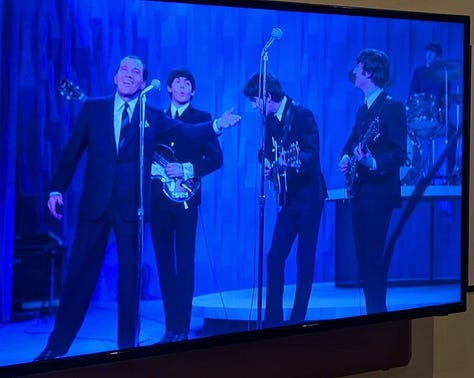

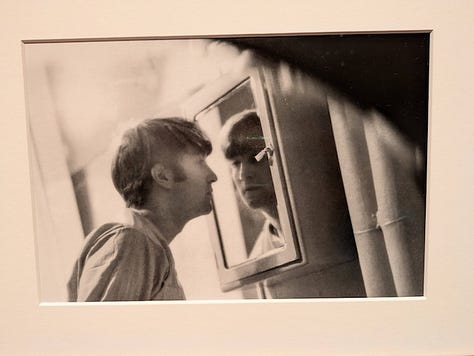

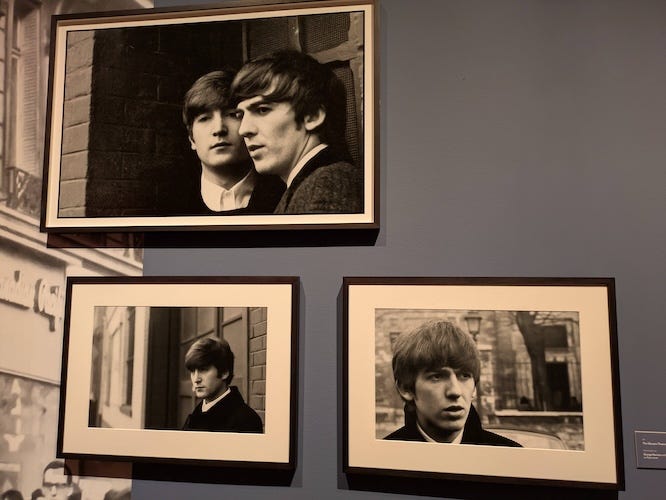
OK, on to books.
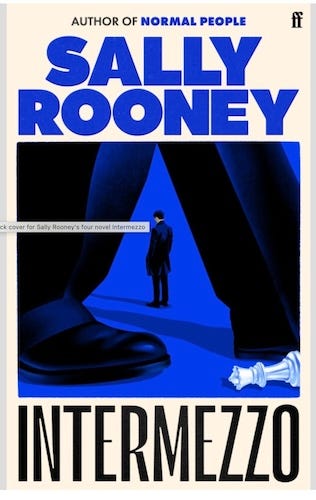
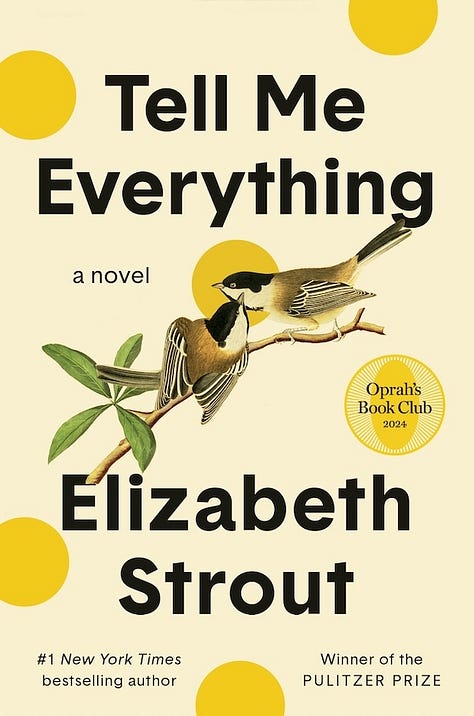
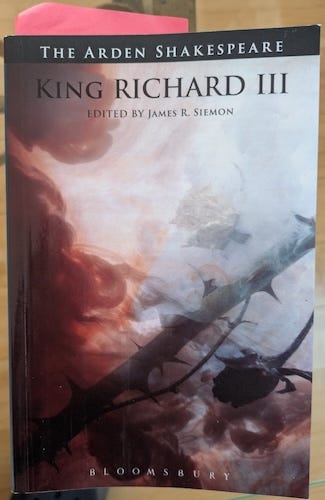
On the way to Portland on the train I started reading Sally Rooney's 2024 novel, Intermezzo. And because it gets dark out so early, I also got to spend hours reading in our hotel room reading. I had not fallen so far into a novel in a long time. Several techniques made me feel like I was inside the story, in the rooms and on the streets beside these characters.
Two of these are Rooney’s use of pronouns without always identifying whose thoughts and speech we’re hearing, and her very long paragraphs. Both of these made me read slowly and pay close attention. I loved that. Another thing that brought me inside characters’ heads is the way she cuts off sentences before the final noun, or the resolution of the sentence, just like we do when we speak. We cut off sentences when the listener knows exactly what we’re talking about, or when we hope they do, so that we don’t have to put the ultimate into words. And finally, she uses present tense throughout, which I sometimes find exhausting, as if it’s used as a shortcut to high intensity, and not every bit of a story needs that much intensity or can sustain it. But Sally Rooney is able to modulate for a range of emotional intensity while staying in present tense.
Rooney’s characters are sympathetic and then not sympathetic, in my opinion, just like real people (or Normal People). We can’t read each other’s minds, so we hurt each other, and Rooney is very good at letting the reader into the mind of each character so that we feel the pain and then the tenderness if an understanding is reached. I find her writing cathartic. But for catharsis, you have to have a build-up, and at one point I was feeling so much pain from this book that I couldn’t go to sleep but had to read until that particular section was over the hump. Then I could relax.
The bigger themes, I’d say, are rigid ways of thought and how grief forces them to break open. Grief is good for us in that way, when we have people to help us hold our life together. Grief over break-ups and conflicts with people I love taught me that lesson, more than my mother’s death did, because they happened in adulthood.
The next novel I started on, and finished after we got home, was Elizabeth Strout’s 2024 novel, Tell Me Everything. Its title reminds me of my late friend Susan, thirteen years older than I was, who was such a good listener when I was a teen and she was around 30. If she hadn’t seen me in a few days, she sometimes greeted me with, “Okay, tell me everything!” It felt so good.
Back to the novel! I was delighted to see in it similar themes to Intermezzo, of grief plus rigid, judgmental thinking that can sometimes be softened. I wonder, had I read Tell Me Everything following a novel other than Intermezzo, would the themes have echoed like they do, or would I have seen different ones? Are themes subjective, only existing in the eye of the beholder? In high school we were supposed to identify themes and symbolism in short stories, novels, and plays, and it all seemed very codified. I had a hard enough time reading for plot, sustaining my understanding of who was who, and understanding pay-offs that were set up way earlier in the book or story. I’d read zillions of YA novels, but capital-L Literature was a challenge. So, “what do the flowers symbolize in ‘Rappacini’s Daughter’?” was just a guessing game. I think I remembered that story just now because it was one that I had to do a presentation on as a high school sophomore—ugh! Struggling with literature was demoralizing because I so loved to read, and thought that reading was the one solitary thing at school I was good at. But no. “Oh well,” as I often wrote in my journal. You can’t change high school.
ANYWAY… I love the annoying voice in Elizabeth Strout’s novels. The narration sounds slightly gossipy, which suits the culture she writes about, and it reminds me a tiny bit of Madame Bovary, where the voice is so gossipy it makes me laugh. I love the snobbish or reverse-snobbish Strout characters, such as her Olive Kitteridge, who are nosy and judgy and then you see their goodness in another setting. It’s so real.
This particular novel consists largely of two characters telling stories to each other, from their own lives and from other people’s. But it also contains a super-sympathetic whodunnit and a tale of romantic tension. I got so immersed that as soon as I finished it, I went back to the Libby app and borrowed another Strout novel involving some of the same characters, Anything Is Possible. I’m almost done… and now I want to read the rest of Strout’s novels to see even more of these small-town New England and Illinois people.
I feel kind of guilty for writing about a bestseller and an Oprah pick. But they made an impression, so I’d say they are bestsellers for good reason. Well, anyway, I don’t only read bestsellers.
And finally, during all that reading, I also slowly read my way through Shakespeare’s King Richard III for
’s online book club. It is a long history play, containing three Edwards, three kings, several princes, three matriarchs, and at least three important characters who don’t appear in the play but are mentioned in reference to historical events. I wonder if Shakespeare’s history plays, when they were performed in the 1500s or 1600s, were for the audiences kinda like historical novels are for today’s readers?The edition that I read has loads of notes, but it was easier for me to Google the events and people to help myself hold the plot together. I wrote a ton of notes in my book. Every time there was an Edward, I noted which Edward it was. Every time a matriarch lamented, I noted who her children had been. I enjoyed all this. But I imagine that if I’d joined Henry’s Shakespeare book club last year, maybe the first play we read might have been an easier one. Anyway, I’ll be along for the ride throughout 2025, reading ten plays. I’m looking forward to the monthly discussions.




Love the idea of ‘Solo Book Club!’ Such fun reads!
The audience would have been much more familiar with the story, yes, and history was a popular subject of stage plays. Our first read last year was Romeo and Juliet!